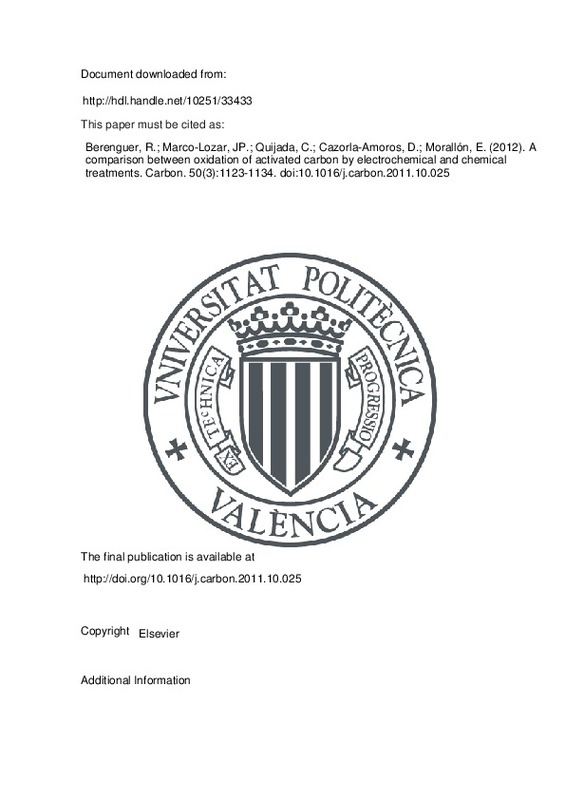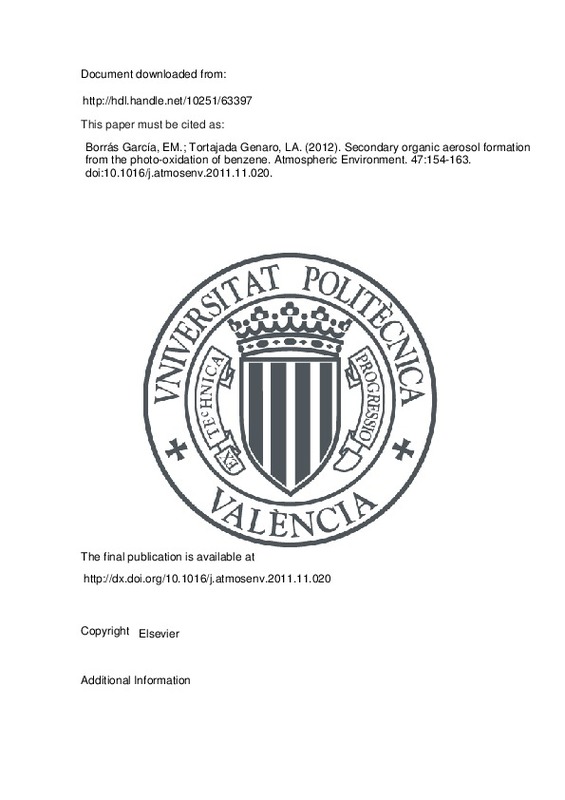Berenguer, R.; Marco-Lozar, JP.; Quijada Tomás, C.; Cazorla-Amoros, D.; Morallón, E. (2012). A comparison between oxidation of activated carbon by electrochemical and chemical treatments. Carbon. 50(3):1123-1134. https://doi.org/10.1016/j.carbon.2011.10.025
Por favor, use este identificador para citar o enlazar este ítem: http://hdl.handle.net/10251/33433
|
Título:
|
A comparison between oxidation of activated carbon by electrochemical and chemical treatments
|
|
Autor:
|
Berenguer, Raúl
Marco-Lozar, Juan Pablo
Quijada Tomás, Cesar
Cazorla-Amoros, Diego
Morallón, Emilia
|
|
Entidad UPV:
|
Universitat Politècnica de València. Departamento de Ingeniería Textil y Papelera - Departament d'Enginyeria Tèxtil i Paperera
|
|
Fecha difusión:
|
|
|
Resumen:
|
The anodic oxidation of a granular activated carbon (GAC) in NaCl solution has been studied. The influence of the electrocatalyst-anode material, applied current and time of treatment on both the surface chemistry and ...[+]
The anodic oxidation of a granular activated carbon (GAC) in NaCl solution has been studied. The influence of the electrocatalyst-anode material, applied current and time of treatment on both the surface chemistry and porous texture properties of the GAC has been analyzed. For comparison purposes, the same GAC has been treated with three of the classical chemical oxidants: HNO 3, H 2O 2 and (NH 4) 2S 2O 8 at different concentrations and for different times. Results show that the anodic treatment in NaCl causes a remarkable oxidation of the AC without modifying significantly its textural properties. TPD profiles and the linear dependence of the amount of CO- and CO 2-evolution against the oxidation level denotes that surface oxygen groups of similar nature and composition are formed anodically, regardless of the anode material. The achieved oxidation degree depends on the different ability of each anode for the electrochemical generation of highly oxidizing chlorine species, and it increases progressively with the applied current and the time of treatment. In general, for similar treatment times, the anodic treatment in NaCl can produce oxidation degrees much higher than the chemical treatment with (NH 4) 2S 2O 8, which has been found to be the most oxidative chemical studied in this work.
[-]
|
|
Palabras clave:
|
Anode material
,
Anodic treatment
,
Applied current
,
Chemical oxidants
,
Chemical treatments
,
Electrochemical Generation
,
Granular activated carbons
,
Linear dependence
,
NaCl solution
,
Oxidation degree
,
Oxidation level
,
Oxidative chemicals
,
Porous texture
,
Surface oxygen groups
,
Textural properties
,
Treatment time
,
Activated carbon
,
Anodes
,
Carbon dioxide
,
Chemical analysis
,
Chlorine
,
Electrocatalysts
,
Nitric acid
,
Sodium chloride
,
Surface chemistry
,
Anodic oxidation
|
|
Derechos de uso:
|
Reserva de todos los derechos
|
|
Fuente:
|
Carbon. (issn:
0008-6223
)
|
|
DOI:
|
10.1016/j.carbon.2011.10.025
|
|
Editorial:
|
Elsevier
|
|
Versión del editor:
|
http://doi.org/10.1016/j.carbon.2011.10.025
|
|
Código del Proyecto:
|
info:eu-repo/grantAgreement/MICINN//MAT2010-15273/ES/ELECTRODOS NANOESTRUCTURADOS PARA APLICACIONES EN SENSORES ELECTROQUIMICOS Y SUPERCONDENSADORES/
info:eu-repo/grantAgreement/GVA//PROMETEO09%2F2009%2F047/ES/Materiales carbonosos y medio ambiente/
info:eu-repo/grantAgreement/MICINN//CTQ2009-10813/
|
|
Agradecimientos:
|
Financial support by the Ministerio de Ciencia e Innovacion (MAT2010-15273 and CTQ2009-10813) and Generalitat Valenciana and FEDER (PROMETEO/2009/047) projects are gratefully acknowledged.
|
|
Tipo:
|
Artículo
|







![[Cerrado]](/themes/UPV/images/candado.png)


